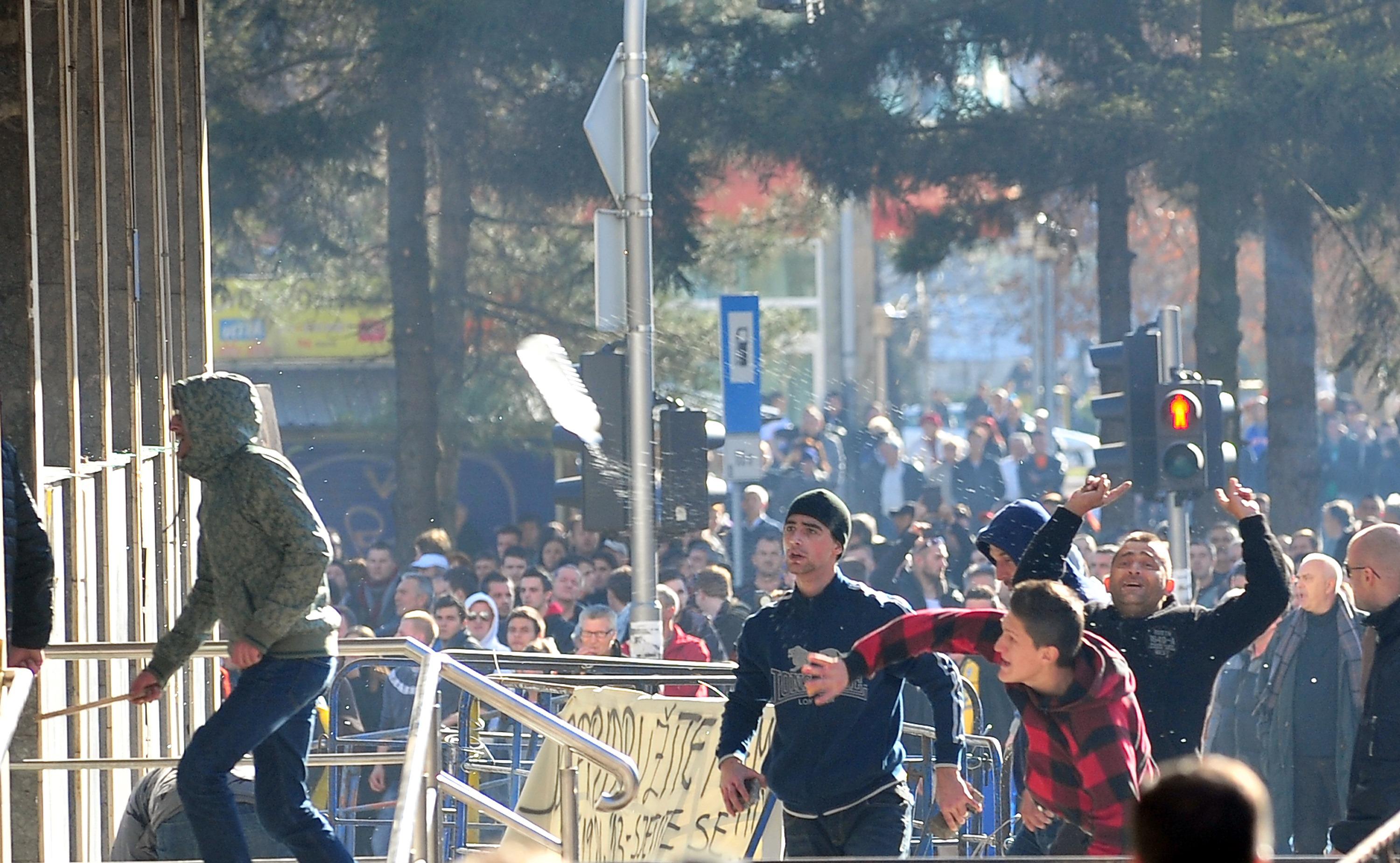Credit to any pundit or analyst who predicted Bosnia would be leading international headlines in early 2014. (It’s a short list.)
Massive and occasionally violent anti-government protests have now shut down Sarajevo and five other Bosnian cities, and the country looks more unstable than it has since the end of its bloody civil war in 1995.
What some supporters are already optimistically calling a “Bosnian Spring” began last Tuesday in the northeastern town of Tuzla as a protest by a group of unemployed workers unhappy with the privatization of local firms. The protest quickly turned into a clash with police and ended with a government building being set on fire.
Tim Judah of the Economist has a good rundown of the events so far, including some surreal cameos from a nude, sunbathing judge and a heartbroken Olympics mascot. Some of the more organized protesters have begun referring to themselves as a movement called UDAR—an intentional evocation of the party led by boxer-turned-opposition leader Vitali Klitshko in Ukraine.
That Bosnians are angry is understandable: Overall unemployment hovers between 27 and 40 percent depending on whether you count the black market, and it’s about 70 percent for young people. But does all of this have anything to do with the country’s long-standing ethnic divisions?
Yes and no. The country is divided into the predominantly Bosniak and Croat Federation of Bosnia and Herzegovina and the predominantly Serb Republika Srpska. So far the vast majority of the protests have been in the federation, but nationalist rhetoric has been minimal so far.
On the other hand, the political paralysis that led to the current crisis is certainly related to the compromise that ended the war. The Dayton Accords, which ended the war in 1995, were designed to divide power among the Bosniaks, Croats, and Serbs. In practice, as a 2011 Reuters feature put it, the deal “split the country into two autonomous, ethnically based regions so decentralised and unwieldy that Bosnia barely functions at the state level”:
Its administration is bloated, its institutions fragmented and its politics polarised along ethnic lines. The European Commission described the overlapping bureaucracy as a “hyperinflation of competencies” in its October report on Bosnia’s halting progress towards EU membership.
While the Bosnian Muslims want to streamline and integrate the state, the Bosnian Serbs are fiercely protective of the autonomy they enjoy as enshrined in the Dayton peace deal.
This was very much on display in 2010 and 2011 when it took the country’s leaders 15 months after an election for form a government.
Things have only gotten worse as the country has sought to get its regulations up to European Union membership, with long-running turf battles between the national government and the entities over who is responsible for what. After neighboring Croatia joined the EU last year, Bosnian farmers found themselves cut off from their largest customers due to disputes over who was responsible for getting the country’s agricultural regulations up to code.
Then there’s the country’s constitution, which guarantees that “the three-member presidency and the parliamentary House of Peoples, be equally divided among Bosniaks, Croats and Serbs” and was successfully challenged by Jewish and Roma plaintiffs in the European Court of Human Rights in 2009 on the grounds that it excluded them.
The Dayton Accords may have been the best deal available at the time, and negotiators including the late U.S. diplomat Richard Holbrooke certainly deserve credit for helping to end the bloodshed. But in the name of stopping the fighting, the agreement put off questions of how the cobbled-together nation was supposed to function as a state. Twenty years later those chickens seem to be coming home to roost.
